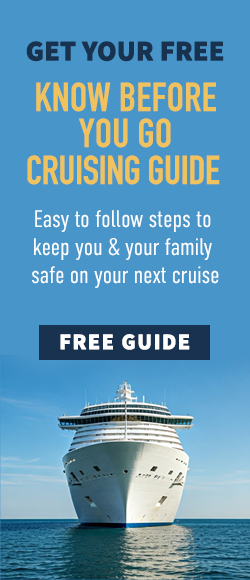MIAMI HERALD
Accidents aboard ships do happen, but not very often
While two recent disasters are causing some jitters, cruises remain one of the safest vacation environments around.
Two cruise ship disasters within a week have prompted questions about passenger safety both aboard and ashore.
First, an excursion bus carrying 14 cruise-ship passengers from Celebrity Cruises’ Millennium plunged over a cliff in Chile, killing 12 of them and injuring two others.
Later the same week, a fire aboard Princess Cruises’ Star Princess damaged more than 100 cabins before being extinguished. One person died, apparently from a heart attack, and two others with smoke inhalation were airlifted to a Florida hospital.
Each event points up the fact that accidents can and do happen even though cruising is one of the safest vacation environments, said Bruce McIndoe, CEO of iJet, a global travel risk management company.
“On a cruise ship you’re in a contained environment,” he says. “But when you leave that cocoon, you’re moving from a safe environment to one of the highest risks [shore excursions to remote locations].”
Passengers who died in the Chile bus disaster apparently had booked the tour to a remote national park on their own, not through the cruise line. “We do not know this tour operator. We’ve never dealt with this tour operator before,” said Dan Hanrahan, Celebrity’s president. Later reports revealed that the operator was not licensed.
Those are important points. Most experts, including McIndoe, recommend taking a ship-sanctioned excursion. Before the cruise line makes an arrangement with a shore tour operator, it vets the company, checking out its methods, equipment, maintenance and safety record.
“You are least protected when you go into town, rent a car or taxi and go off on an excursion of your own,” said Michael Crye, president of the International Council of Cruise Lines.
On the minus side, ship-arranged excursions are usually significantly more expensive than the ones you arrange on your own.
Cruise lines also insist that a shore operator be licensed and carry sufficient insurance. This is not only a measure of the tour operator’s competence, but provides for legal redress.
If an accident does occur, injured passengers can seek damages from an insured tour operator. To be successful in a suit against a cruise line, however, one of three conditions has to exist, says Miami attorney Charles Lipcon, who specializes in maritime law: “If the ticket for the excursion was sold on board, if the cruise line had knowledge of a known danger, or if they [the cruise line] in fact operate the excursion.”
Just as shore excursion accidents are rare events, so is fire on board. Only 33 fires have occurred aboard cruise ships in the past 15 years — a tiny number compared to the 90 million passengers who have cruised in the past two decades.
Moreover, today’s mandated safety measures — thousands of fire detectors and sprinklers, miles of fire hose — have made onboard fires easier to extinguish.
However, questions remain as to why the fire aboard the Star Princess spread so quickly and so far. As a thoroughly modern ship launched in 2002, the Star Princess has adhered to all the required international fire safety regulations, including restrictions on combustible materials, insulated bulkheads, separate fire zones, sprinkler systems and fire hoses, crew training and formation of fire-fighting teams.
Princess has canceled all remaining Caribbean cruises on the damaged vessel, including the April 30 transatlantic cruise, and is sending the ship to the Lloyd Werft shipyard in Germany for repairs.
Star Princess plans to resume service on May 15 in Europe.







